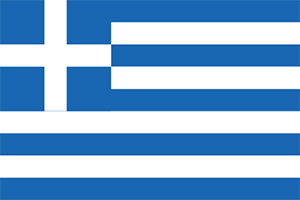Greece - Country Background Information
- Describing the forms of education in the country
- Identifying an ‘inclusive setting’ in the country
- What an ‘official decision of SEN’ means in the country
- What ‘out-of-education’ means in the country
4-14 years old. Education of all children is compulsory from the age of 4 to 14 years old and is provided within the school units (public or private).
What are the typical age ranges for the ISCED levels?
| ISCED LEVEL 02 | ISCED LEVEL 1 | ISCED LEVEL 2 | ISCED LEVEL 3 |
|---|---|---|---|
| 4-5 | 6-11 | 12-14 | 14-17 |
According to Law Ν. 682/1977, article 1: “Private schools of general education, within the meaning of this law, are those corresponding to the public schools of general primary or secondary education, which do not belong to the State, but are established and maintained by natural or legal persons”
In other words, all levels of education are catered for by both private and public schools. State-run schools do not charge tuition fees and textbooks are provided free of charge to all pupils. On the other hand, private institutions charge annual tuition fees depending on the school and the grade.
Subparagraph c, paragraph 4 of article 6 of Law 3699/2008, provides teaching at home, when it is necessary, for serious short-term or chronic health problems, which do not allow students to move and attend school physically.
It concerns both primary and secondary education.
An official decision refers to the evaluation report on students’ identified educational needs issued by the Centres for Interdisciplinary Assessment Counselling and Support (KEDASY).
In case of pupils with indications of having special educational needs or other psycho-social difficulties, the school, at a first stage, supported by the Interdisciplinary Support Committees (EDY) devises a short-term intervention program. This programme is applied at the school level.
At a second stage, if it is considered as necessary, students with indications of having special educational needs or other psycho-social difficulties are further evaluated by the Centres for Interdisciplinary Assessment Counselling and Support (KEDASY) which carry out individual evaluations and issue evaluation reports. This process is carried out:
-
upon the proposal of the of the school’s Interdisciplinary Support Committees (EDY), or the Educational Support Team of the school where no EDY operates or
-
After the immediate request of the pupil’s parent or guardian to the KEDASY. In this case, KEDASYs cooperate with the school and can ask the opinion of the EDY or the Educational Support Team of the school, if it is considered as necessary.
-
At the request of the school and with the parent's consent.
In the 2nd and 3rd case the request is accompanied by a descriptive evaluation which is prepared by the student's teachers.
According to the law 4823/2021, educational & psychosocial assessment reports, as well as the basic frameworks of individualised educational plans, are devised for each pupil with disabilities by the Centers for Interdisciplinary Assessment Counselling and Support, following the interdisciplinary assessment of his/her educational needs.
The assessment reports describe the specific educational and psychosocial needs of each pupil as well as their aptitudes and interests and propose the appropriate school setting. These reports also identify any possible reasonable accommodations and specific support that may be required for each individual student, including the provision of assistive compensatory aids, specific learning materials in alternative/accessible formats, modes and means of communication and communication aids and assistive and information technology. Support can also consist of a qualified special needs teacher on a one-to-one basis or in an inclusive class. Assessment reports also address the transitions experienced by the learners from segregated to mainstream settings and between levels of education. Assessment reports are accompanied by the basic axes of educational individualised educational support. It should be emphasised that students with disabilities as well as their parents are having a say over the drafting of their own individualised educational plans along with the interdisciplinary team of the Centre for Interdisciplinary Assessment Counselling and Support. In this sense, the children co design along with parents and experts the educational plan that fits them best. The specification of the basic axes of the Individualised plans are further analysed in short-term and long term goals at school level by the Interdisciplinary Support Committee or by the schools Educational Support Team. The members of the educational support team along with the class teachers are responsible for the effective implementation of the goals of the individualised Educational Plan.
In case that the parents of the child do not agree with the assessment report, they are entitled to appeal to an Appeal Assessor committee of Interdisciplinary assessment. During this process, parents can select an expert to take part and express their opinion in the assessment procedure.
For the majority of cases, reports on disability and/or special educational needs are issued once, unless otherwise provided by the diagnostic committee. Also, assessments are mandatory every time the student changes educational level. As far as the Individualised Educational Programmes (EPE) are concerned, they are regularly modified at school level according to the needs of the student.
In the Greek educational system, the education of students aged 4-14 is mandatory. Consequently, «out of education" may apply to anyone who either has unjustifiably never enrolled in the structures of the education system or enrolled but did not attend.
